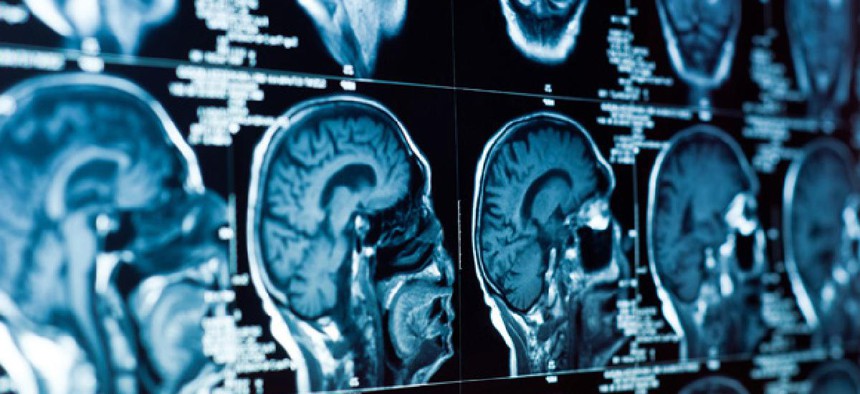Can computers predict medical problems? VA thinks maybe.

Oliver Sved/Shutterstock.com
An advanced ‘clinical reasoning’ system will tap the Veterans Health Administration’s vast digital archive.
The Veterans Health Administration plans to test how advanced clinical reasoning and prediction systems can use massive amounts of archived patient data to help improve care, efficiency and health outcomes.
The Veterans Affairs Department’s electronic health record system -- the Veterans Health Information Systems and Technology Architecture, or VistA -- stores data on 30 million veterans, including 3.2 billion clinical orders, 1.8 billion medication prescriptions and 2.3 billion vital sign measurements. This structured data is accompanied by 2 billion clinical text notes, with a growth rate of one hundred thousand additional notes per day.
In a request to potential vendors on Monday, VA emphasized that such a system goes far beyond traditional data mining techniques and rules-based clinical decision support systems.
The agency wants to test an emerging class of computer systems that can sift through structured and unstructured data and use advanced natural language processing techniques and machine learning to detect patterns -- the results of which would flag problems, inform decision-making and ultimately, improve patient care.
VHA said it plans to install a pilot clinical reasoning and prediction system at the VA Information Technology Center in Austin, Texas, for 24 months to assess the technology. The system will be able to decompose and understand natural language queries from physicians.
The pilot project will assess how effectively the system aids diagnosis, including syndrome identification, and its ability to conduct semantic searches across clinical notes and patient problems and medications.
VHA also wants the system to help it conduct comparative studies in treatment efficiencies, identify drug-adverse events and evaluate quality of care with improved patient health as a goal.
The pilot system should accommodate 100 users and support 100 complex “patient case” results per hour, with a three-minute response time per case. Non-concurrently, it should accommodate 600 “simple” semantic searches per hour, with a one minute response time, VHA said.
The pilot could analyze such things as the risk that patients will fall or need to be readmitted to the hospital or the potential that clinical data and other problems will be missed.
Tom Munnecke, who helped develop VistA at VA in 1978 and then served as chief scientist for Science Applications International Corp., where he worked on developing the Defense electronic health record, said the clinical reasoning system will help VA crowdsource “medical knowledge based on the immense breadth and depth of its clinical staff.”
VA employs more than 14,000 physicians, and this puts it in a “unique position with regard to scale,” Munnecke said. “It has enough clinicians to feedback knowledge to the prediction engine based on their experience.”
Munnecke said VA’s vast warehouse of digital medical data should be designated “as some kind of national historical treasure. It is an irreplaceable historical record whose value will only increase as we advance our understanding of the life sciences, health and medicine.”
He urged that this data be treated and managed in an open fashion. “I think that it is absolutely vital that the VA require that all of the algorithms, knowledge bases, and data bases used in its clinical activities be open.”
He added, “We cannot allow a vendor to create a pay-per-view black-box ‘paywall’ for the VHA to pay to access its own data.”
(Image via Oliver Sved/Shutterstock.com)
NEXT STORY: Fast failure could lead to big-data success






